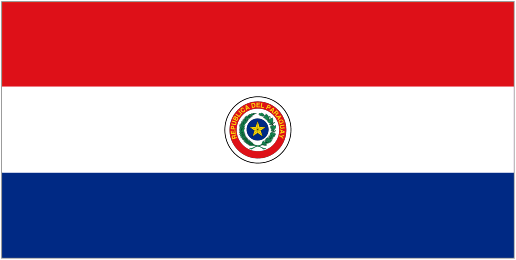May 15

Today, May 15, is Paraguay’s Independence Day.
The Rio Paraguay winds across 1500 miles of Brazil, Paraguay and Argentina. Its both the source and outlet for the Pantanal wetlands, the largest tropical wetlands in the world, and, due to its Amazonian neighbor, one of the most overlooked.
The river divides Paraguay in half, giving the country it’s name and its lifeblood. Paraguay is a landlocked country, one of only two in South America. Like the Pantanal wetlands, Paraguay has been overlooked by the world in favor of its larger and more accessible neighbors like Brazil, Peru, and Argentina.
The first European to reach the Paraguay River (and live to tell the tale) was Alejo Garcia. After being shipwrecked on the coast of Brazil he lived for 8 years with a tribe who told him of a great “White King” out West on a mountain of silver. Garcia traveled inland to what is now Paraguay, where he recruited 2000 Guarani to fight who would turn out to be the Incas. They stole vast amounts of gold and silver from the Empire, but Garcia was killed on the way back to Brazil.
Word of the city of silver and gold intrigued the Spanish, who initially took interest in Paraguay as a centerpoint of their South American empire. But interest in the area around Asuncion soon waned in favor of Lima and Buenos Aires.
“Madrid preferred to avoid the intricacies and the expense of governing and defending a remote colony that had shown early promise but ultimately proved to have dubious value.”

The settlers elected the Basque Domingo Martinez de Irala governor of the colony. Irala was considered a humane leader and a tough governor, who gained the respect of both the natives and the colonists. But he conceded to settlers’ demands for the parceling of land and conscripted Indian labor to the settlers, a system which eventually degenerated into near-slavery conditions.
Elsewhere in South America this system yielded profits for the Spanish government. But Paraguay was not a farming society like Peru. The Guarani were hunter/gatherers, not farmers.
Friction increased between the descendants of the settlers and the Spanish government. Spain’s economic policies and consistent downgrading of Paraguay’s importance deepened the colony’s impoverishment. In 1617 when the colony was split into two–Asuncion and Buenos Aires–Paraguay lost control of the throughway to the Atlantic via the Rio de la Plata.
There was also friction between the landowning Mestizos and the Jesuit missionaries. For 150 years the Jesuits organized the Indians to block the attempts at forced labor. In the 1720s the Paraguayans rebelled against pro-Jesuit Spanish leaders, and the Jesuits were eventually expelled.
To the Paraguayans, the final blow came in 1776 when Spain officially put Paraguay under control of Buenos Aires and Argentina.
The Napoleonic Wars hit Spain hard in 1808. Spain lost the ability to control its colonies, and in 1810 Argentina overthrew the Spanish government in Buenos Aires. The Paraguayans followed suit on May 14, 1811 with a coup that overthrew the Spanish governor and affirmed the separation between Paraguay and Argentina.
The following day the new government elected its first president, 45 year-old Gaspar Rodriguez de Francia.
Cultures of the World: Paraguay
Paraguay: Independence and Dictatorship
